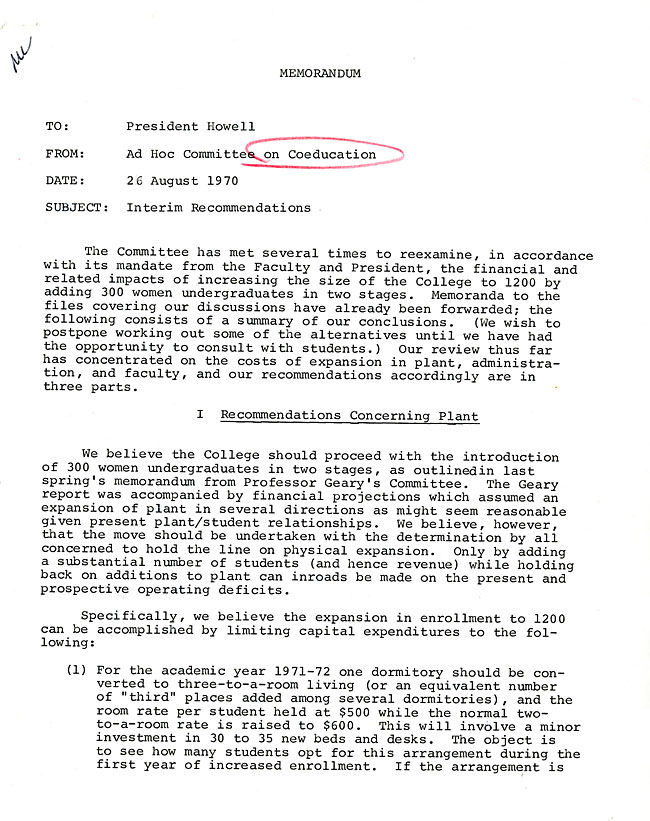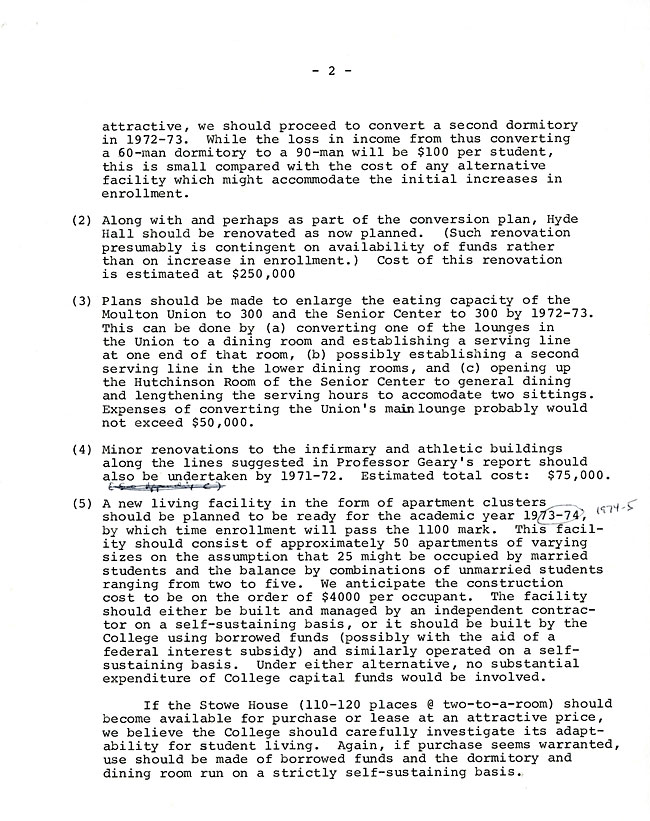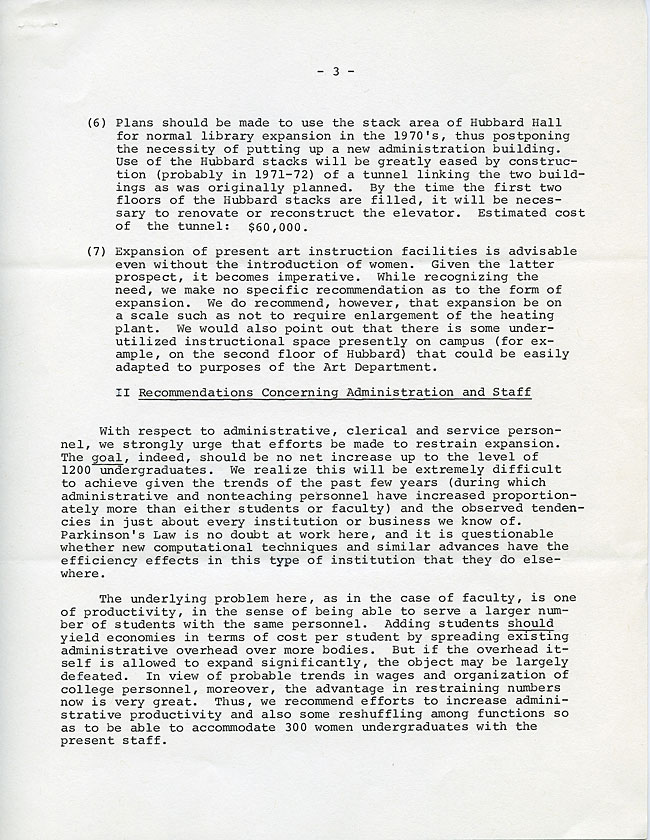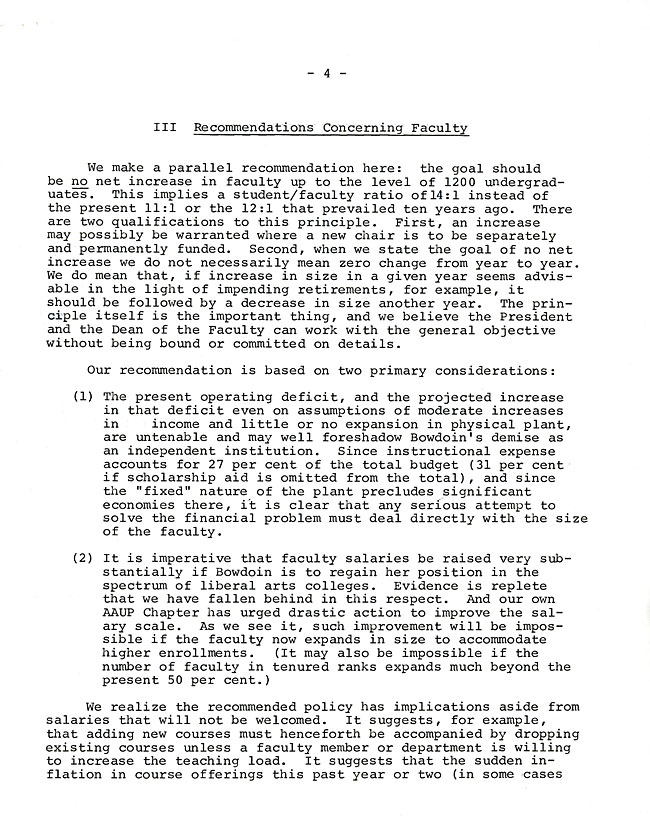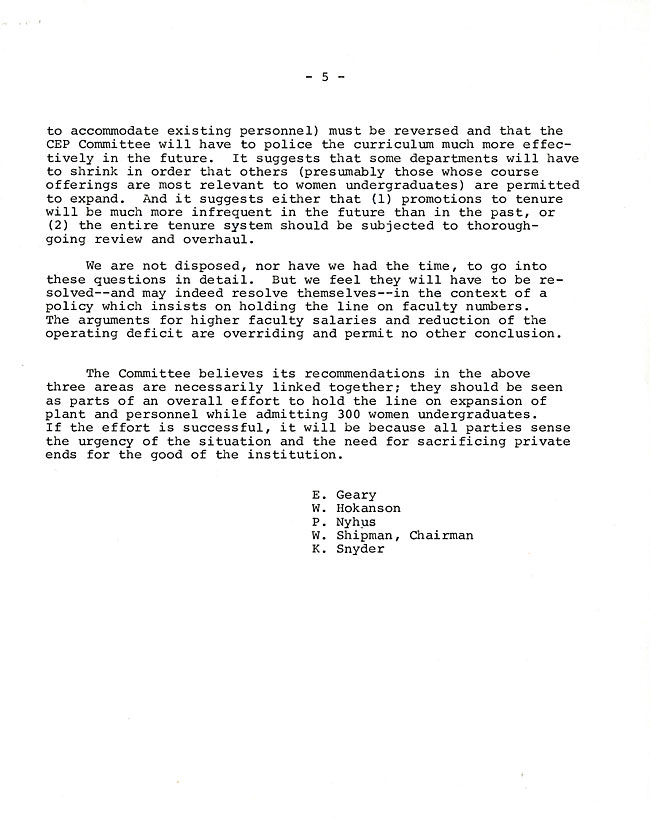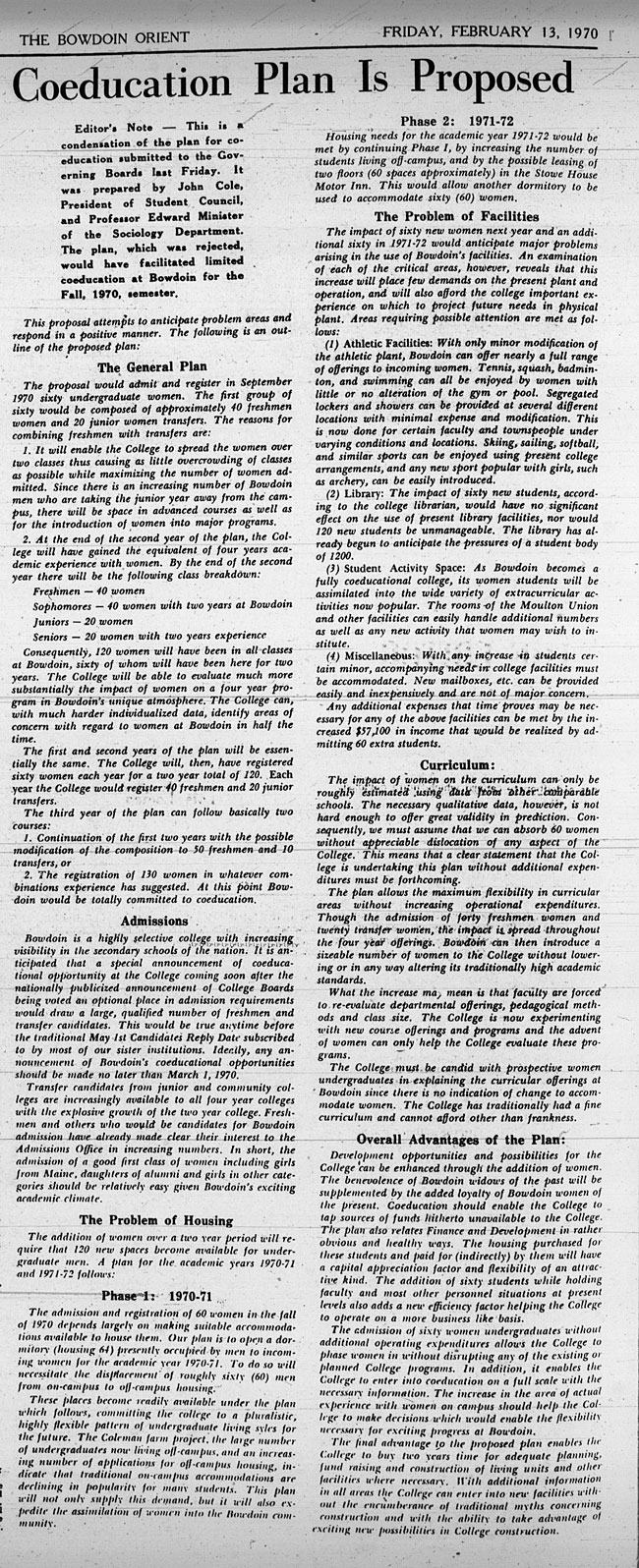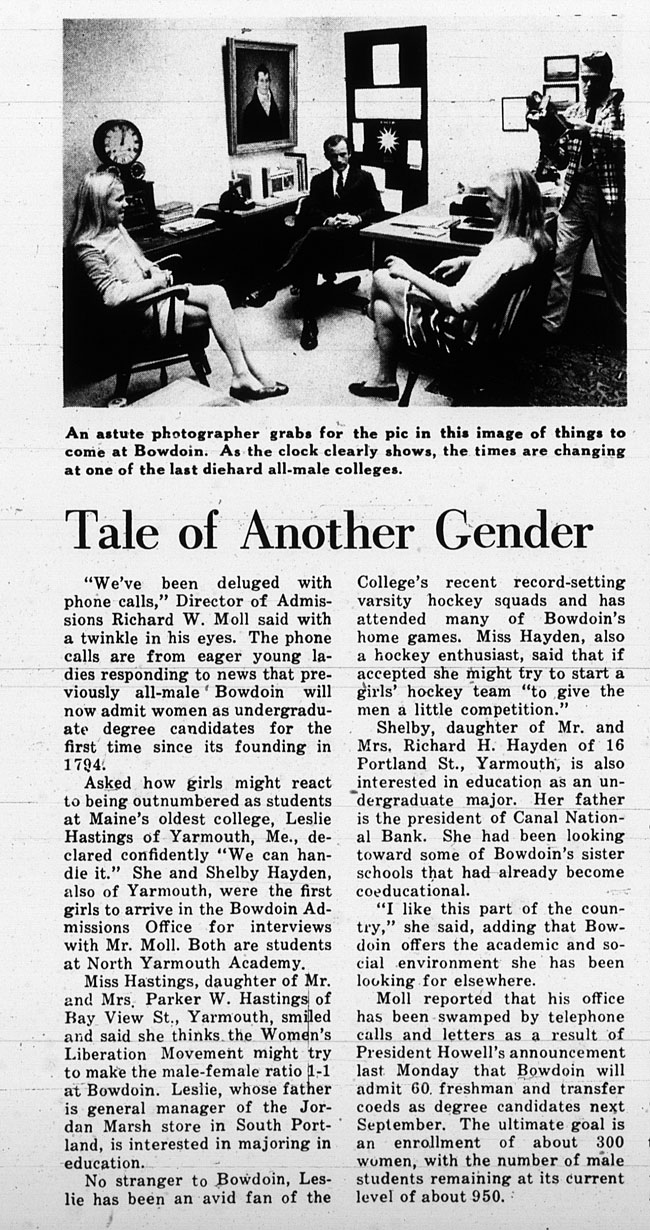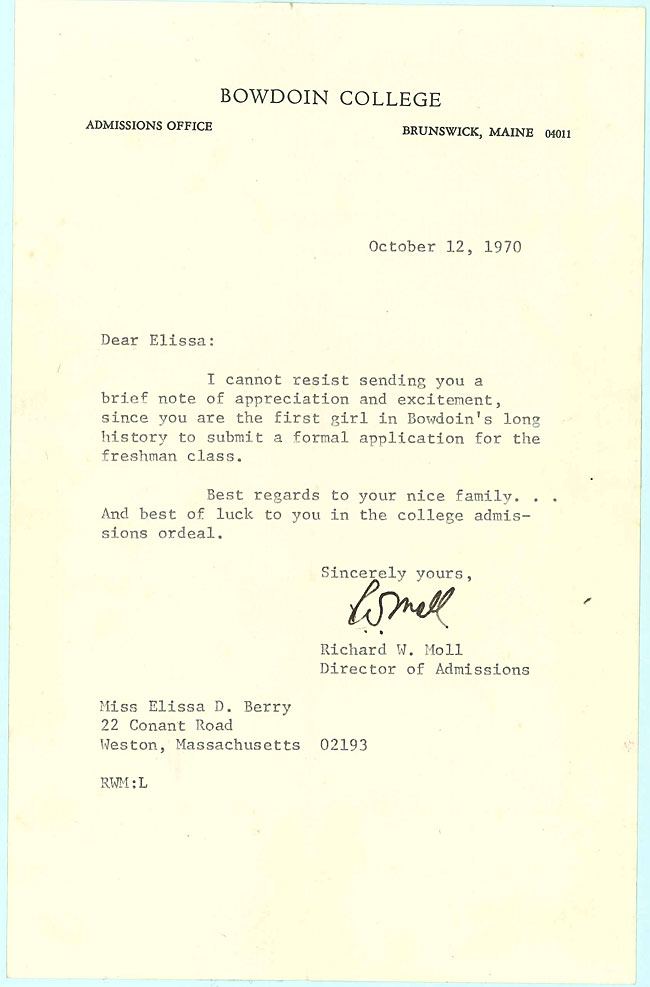In considering the transition to coeducation, colleges and universities around the United States began to reflect on the many changes that would occur or be required in admitting the “opposite sex”. Prospective changes included those to living facilities and dormitories, dining halls, infirmary and athletic buildings, and notably, college curricula. Bowdoin addressed the anticipation of women entering the student body by creating an Ad Hoc Committee on Coeducation. The role of the subcommittee was to examine the various changes within the aforementioned areas that would result due to women’s admission.
Like many of its collegiate and university counterparts, Bowdoin anticipated specific curricular modifications that the entrance of women would necessitate. On August 26, 1970, the Ad Hoc Committee wrote this memorandum (Document SW, 32) to President Howell to discuss the introduction of 300 undergraduate women in two stages, and in particular, to address the changes for both faculty and staff, and academic buildings they felt the entrance of women would require.
Akin to the views of other higher educational institutions at the time, the Ad Hoc Committee asserts that an increase in faculty members was not initially necessary. Rather they contend that a greater monitoring of the curriculum provisions by the Curriculum and Education Policy (C.E.P.) committee is needed since they believe the admission of women would lead not only to a general “inflation in course offerings” but also to the reduction of various academic departments such that “others (presumably those who course offerings are most relevant to women undergraduates) [would be] permitted to expand.” The Ad Hoc Committee also suggests the expansion of the current art instruction facilities is “advisable” regardless of the introduction of women but “imperative” given their anticipated admission.
